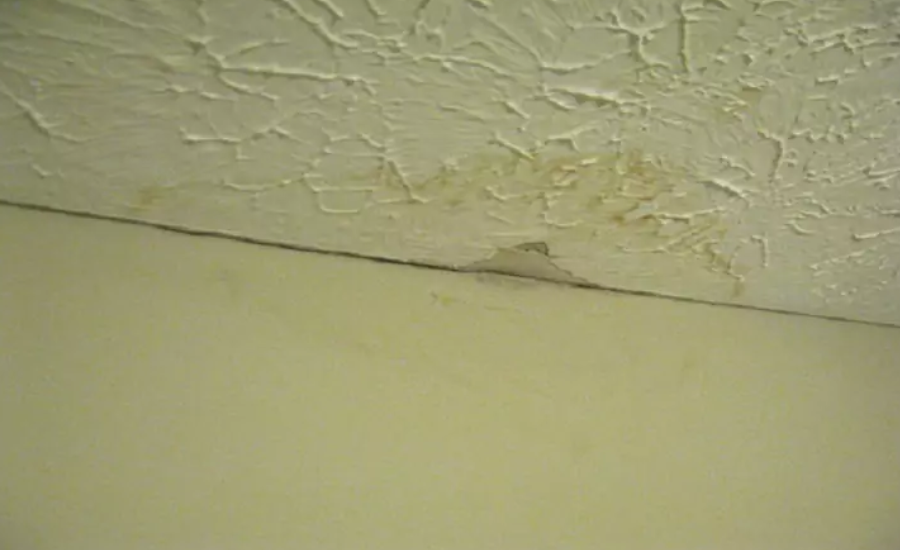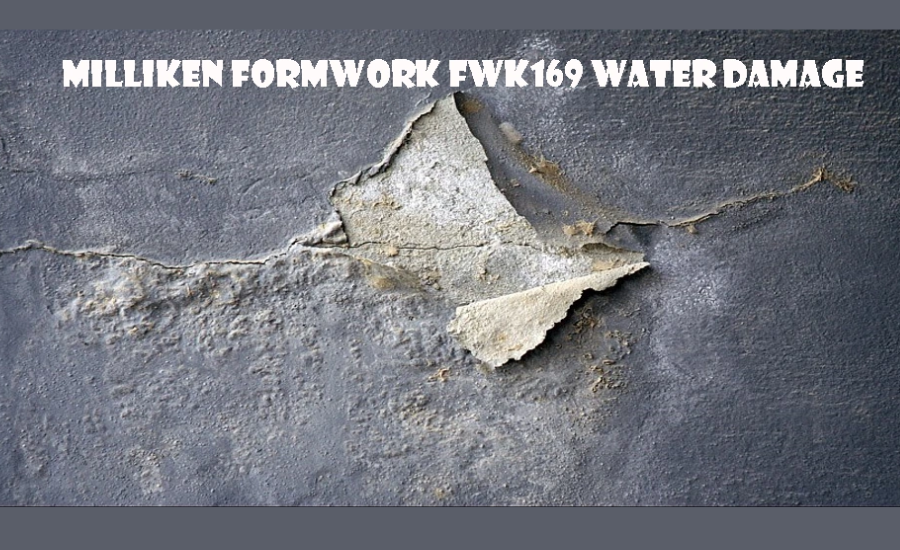Water damage presents a serious challenge for both contractors and homeowners, particularly when it impacts critical structural components like Milliken Formwork FWK169. This advanced formwork system, widely used in diverse construction projects, is susceptible to a range of water-related issues such as leaks, flooding, and other forms of water intrusion. Given its crucial role in supporting concrete during the curing process, any water damage can jeopardize the formwork’s effectiveness and the overall structural integrity of the construction. To mitigate these risks, it is essential to act swiftly and decisively. This comprehensive guide outlines the best practices for addressing water damage to Milliken Formwork FWK169, providing you with effective strategies to manage and resolve these issues promptly. By following these guidelines, you can safeguard the formwork against potential damage, ensuring both the longevity of the structure and the success of your construction project.
Understanding Milliken Formwork FWK169

Milliken Formwork FWK169 is a highly durable and adaptable formwork system employed across various construction projects. Engineered to support concrete during the curing phase, it plays a crucial role in shaping and stabilizing the final structure. The system’s robust design ensures reliable performance under typical construction conditions. However, despite its strength and versatility, Milliken Formwork FWK169 is not impervious to water damage. Exposure to moisture can undermine the formwork’s integrity, potentially leading to compromised structural outcomes. Water damage may affect the formwork’s stability, effectiveness, and longevity, making it imperative to address any water-related issues promptly and effectively to maintain the quality and reliability of the construction process.
Common Sources Of Water Damage
- Water intrusion at a construction site can stem from various sources, each posing significant risks to critical components like the Milliken Formwork FWK169. One common issue is leaks, which may result from damaged pipes, faulty plumbing, or inadequate sealing. These leaks can lead to unwanted water accumulation around the formwork, jeopardizing its structural integrity and effectiveness.
- Another major concern is flooding. Heavy rainfall or unforeseen flooding can overwhelm a construction site, causing water to inundate the area and saturate the formwork. If not addressed promptly, this can result in severe water damage, delaying the project and increasing repair costs.
- Additionally, condensation is a less obvious but equally damaging source of water-related issues. Poor ventilation or high humidity levels can cause moisture to condense on the surface of the Milliken Formwork FWK169. Over time, this buildup can weaken the material, leading to potential structural failures or the development of mold and mildew.
Immediate Steps To Address Water Damage
- When dealing with water damage, the first and most critical step is to assess the situation thoroughly. Quickly evaluate the extent of the damage to determine the necessary course of action. Look for visible signs of water intrusion, such as dampness, pooling water, or discoloration. Additionally, check for mold growth, which can develop rapidly in moist environments, and inspect the structure for any signs of weakness or compromise.
- Once the assessment is complete, it is essential to address the root cause of the water intrusion immediately. Identify the source—whether it’s a leaking pipe, a broken seal, or another issue—and take swift action to repair it. Fixing the problem at its source will prevent further water damage and protect the integrity of the structure.
Drying And Cleaning
- To effectively address water damage, proper ventilation is crucial. Begin by increasing airflow around the affected formwork. Open windows to allow fresh air to circulate, and use fans and dehumidifiers to expedite the drying process. By reducing humidity levels, you not only speed up drying but also prevent further moisture-related issues, such as mold growth or material degradation.
- Once the area is adequately ventilated and the majority of the water has been removed, it’s essential to clean and disinfect the affected surfaces thoroughly. This step helps eliminate any contaminants that may have been introduced by the water. Use cleaning agents specifically recommended for construction materials to ensure that the formwork is properly sanitized without causing additional harm.
- After cleaning, carefully inspect the formwork for any signs of damage or deterioration. Look for cracks, warping, or any other issues that might compromise the structural integrity of the formwork. If any components are found to be damaged, repair or replace them immediately to maintain the safety and effectiveness of the construction project. Regular inspections and timely repairs are vital to preventing long-term damage and ensuring the longevity of the structure.
Preventing Future Water Damage

- To effectively prevent water damage to Milliken Formwork FWK169, proactive site management and regular maintenance are essential. Start by improving site drainage to ensure that water doesn’t accumulate around the construction area. Proper drainage systems will help minimize the risk of flooding, which can otherwise lead to severe water damage.
- Conducting regular inspections is equally important. By frequently examining the formwork and its surroundings, you can identify and address any potential water-related issues before they escalate into significant problems. Early detection allows for timely interventions that can save both time and money.
- Maintaining proper ventilation around the formwork is another critical step. Adequate airflow prevents condensation and keeps the environment dry, reducing the likelihood of water-related damage. Ensuring that the site is well-ventilated can protect the formwork from moisture buildup, which can compromise its structural integrity.
FAQs
Q: What is Milliken Formwork FWK169?
A: Milliken Formwork FWK169 is a specialized formwork system widely used in construction to provide support during the concrete curing process. This system forms a stable and precise mold for concrete structures, ensuring that the final build maintains its intended shape and strength. Despite its robust design, the formwork can be vulnerable to water damage, which may compromise its performance and structural integrity if not properly managed.
Q: What are the common sources of water damage affecting Milliken Formwork FWK169?
A: Water damage to Milliken Formwork FWK169 can arise from several sources, including:
- Leaks: Water accumulation can occur around the formwork due to leaks from damaged pipes or other sources of water intrusion within the construction site.
- Flooding: Heavy rainfall or site flooding can inundate the area, causing significant water damage to the formwork if not promptly addressed.
- Condensation: Inadequate ventilation or high humidity levels on the site can lead to condensation forming on the formwork. Over time, this moisture can cause issues that affect the formwork’s durability and performance.
Q: How should I assess and address water damage to Milliken Formwork FWK169?
A: To effectively address water damage to Milliken Formwork FWK169, follow these steps:
- Assess the Situation: Begin by evaluating the extent of the water damage. Look for visible signs such as water pooling, mold growth, or any structural weaknesses in the formwork.
- Stop the Source: Identify the origin of the water intrusion—whether it’s a leak, flooding, or condensation—and take immediate steps to repair the issue to prevent further damage.
- Remove Standing Water: Use suitable equipment, such as pumps, wet vacuums, or mops, to quickly remove any standing water from the area. Prompt removal reduces the potential for further damage and mold growth.
Q: What steps should be taken for drying and cleaning after water damage?
A: Post-water damage, it’s crucial to dry and clean the affected areas thoroughly:
- Ventilate the Area: Enhance airflow around the formwork by using fans, opening windows, and employing dehumidifiers. Proper ventilation helps speed up the drying process and reduces moisture levels.
- Clean and Disinfect: After drying the area, clean and disinfect all affected surfaces to eliminate contaminants and prevent mold growth. Use cleaning agents that are safe and effective for construction materials.
- Inspect and Repair: Once the area is dry and clean, carefully inspect the formwork for any signs of damage or deterioration. Replace or repair any compromised components to ensure the formwork remains structurally sound.
Conclusion
Effectively managing water damage is essential to preserving the integrity and functionality of Milliken Formwork FWK169. To ensure that this formwork system continues to perform optimally, it is important to understand the typical causes of water damage, such as leaks, flooding, and condensation. Immediate and decisive action is required to assess the extent of any damage and to implement corrective measures, such as stopping the source of water intrusion, removing standing water, and thoroughly drying and disinfecting affected areas.
In addition to these immediate steps, implementing preventive strategies is key to minimizing the risk of future water damage. This includes enhancing site drainage, conducting regular inspections, and maintaining proper ventilation to reduce humidity levels. Vigilant monitoring for mold growth and making necessary repairs will further contribute to the long-term durability and reliability of the Milliken Formwork FWK169 system.
Keep in the loop with our newest alerts and updates—stay connected: Soy Mami Coco!
